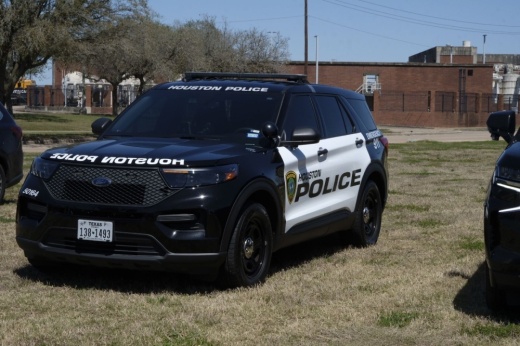Known as One Safe Houston, the initiative launched in early February and is a direct response to a rise in homicides in Houston over the past two years, culminating with 47 murders in January, a 38% increase from January of the previous year. The initiative aims to reduce crime through many programs and ordinances, including overtime for police officers, a focus on the top 200 most violent offenders, crisis intervention teams, a 10% minimum upfront bail bond payment for certain violent charges and increased security at crime hot spots.
The initiative, which uses federal American Rescue Plan Act funds, was recognized May 13 by White House ARPA Coordinator Gene Sperling, Houston Mayor Sylvester Turner said in an interview with Community Impact Newspaper. The acknowledgement came during a trip Turner made to Washington, D.C., alongside Houston Police Department Chief Troy Finner and a small group of other mayors and police chiefs from different U.S. cities.
“[Sperling] specifically commented to me that they had checked out things first before extending the invitation,” Turner said. “They had drilled down into the One Safe Houston plan, and they feel very positive about it.”
Since the January homicide spike, Turner said data shows homicides have started to slow in Houston. As of May 31, the homicide rate is down 3% from May of last year.
Fei Yang, director of the Laboratory for Crime and Justice at the University of Houston-Downtown, said Houston’s strategies target social conditions, such as economic uncertainty and substance use disorders, that are often tied to criminal activity and were exacerbated by the coronavirus pandemic.
“We need to do quality control and prevention,” Yang said.
Mental health resources
Among the ARPA-funded initiatives in One Safe Houston are several related to mental health passed at an April 13 Houston City Council meeting. The three ordinances aim to divert nonviolent mental health calls from HPD while pairing officers with experts in other situations where police presence is still required.
“Having experts who can better diagnose a situation and then apply the right intervention for it and can get the person the help they need can prevent escalation, violence and jailing,” said Sandra Thompson, a professor of criminal law at the University of Houston’s Law Center.
One ordinance created a new $12 million Mobile Crisis Outreach Team program that involves using a 24-hour diversion strategy for mental health crisis calls that are noncriminal and nonviolent. Call are diverted to a group of registered nurses, psychiatrists, licensed clinicians and care coordinators instead of HPD.
The new ordinance expanded a pilot program and made it permanent. A May 25 ordinance passed by the council added another $1.5 million to fund two additional teams.
Council also approved a $2 million expansion of the city’s Crisis Intervention Response Team program. With the expansion, 18 police officers are paired with 18 clinicians to respond and provide services to an individual who is experiencing a mental health crisis.
The council also passed a new mental health ordinance on April 13 that connects HPD to a mental health clinician through a tablet to help in situations where an officer responds to a mental health crisis. According to documents from Turner's office, during the first quarter of 2022, the CCD helped defer a total of 1,113 calls from HPD to the mental health teams.
According to city data, domestic violence accounts for 81% of the increase in homicides from the previous year. One Safe Houston also funds a $10 million domestic abuse response team trained to provide trauma response care for victims. A $3 million investment will specifically help people of color and immigrants.
The initiative was among those to garner praise from President Joe Biden, Turner said. Alejandra Posada, chief operating officer with Mental Health America of Greater Houston, said a person in a mental health crisis is more likely to be a victim of crime rather than committing crime.
“It’s really important to note that most violent crime is not the result of mental illness,” Posada said.
Program progress
To help reduce crime, Houston and Harris County have taken measures to keep violent criminals in jails and deter others who might commit a crime.
A 10% minimum upfront bail bond payment was approved by the Harris County Bail Bond Board on April 13 in an attempt to keep people who have been arrested for violent crimes off the streets. The program requires bail bonds be set at a 10% minimum for arrests made for certain violent crimes.
Some bail bondspeople have criticized the move as a distraction, arguing it will not be effective due to a state law that requires individuals to be released from jail after 90 days if they have not been indicted.
“This is not something that will keep people in jail,” said Ken Good, an attorney and a board member with the Professional Bondsmen of Texas.
However, Dane Schiller, a spokesperson for the Harris County District Attorney’s Office, pushed back on Good’s argument. He said indictments are always returned within the 90-day time frame if a jury finds probable cause that a crime has occurred.
Additional ordinances seeking to prevent crime include an initiative that targets hot spot crime areas by requiring certain businesses to have extra outdoor lighting and security cameras. Camera footage is required to be turned over to HPD if warrants are presented.
City Council also passed an ordinance May 4 making it unlawful to resell a cut catalytic converter without documentation to combat the theft and resale of catalytic converters. The ordinance also closes a reporting gap.
According Commander Salam Zia with HPD, transactions will now have to be uploaded to a database that is monitored by HPD. This will allow them to make note of any suspicious activity.
Zia said that catalytic converter crime has led to an increase in violent crime, especially with aggravated robbery or aggravated assault.
According to an April 28 presentation at the Public Safety and Homeland Security Committee, as of March 2022, aggravated assault and aggravated robbery from catalytic converter crimes were 15 so far this year, in comparison to 34 at the same time of last year.
To combat a court backlog that officials said has slowed down the process of jailing violent offenders, the DA’s office created a $3 million triage program that gives prosecutors the chance to work with overtime pay to clear misdemeanor and felony cases. The misdemeanor and felony case backlog are down 7% and 11%, respectively, from June 2021, Schiller said.
As of May 13, there were 47,900 active felony cases in district courts, the lowest since November 2020, when a peak of 54,000 was hit, Schiller said.
Turner said a $1 million gun buyback program, designed to get illegally obtained firearms off the streets, is the only One Safe Houston program that has not yet been activated. With summer approaching, Turner said he anticipates an uptick in crime and hopes to see the program launched in July.
ARPA funds have to be fully allocated by the end of 2024 and fully spent by the end of 2026. Once exhausted, the fate of One Safe Houston will be left up to future city leadership, according to Turner’s office.





